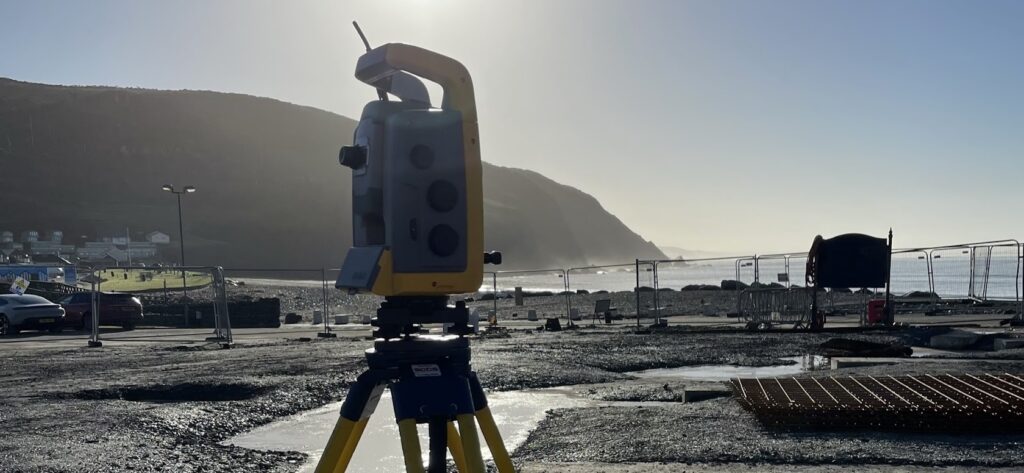Engineering Surveys: The Foundation for Safe and Effective Construction Projects
Wiki Article
Necessary Tools and Methods in Laying Out Design
The discipline of establishing out engineering depends greatly on a collection of crucial tools and strategies that underpin the accuracy and performance of project execution. What implications does this hold for future design techniques?The Relevance of Accurate Dimensions

The relevance of accurate measurements expands beyond simple compliance; they are indispensable to the overall effectiveness of engineering procedures. Errors can result in material waste, job delays, and boosted labor prices, ultimately impacting the job's bottom line. In addition, precise measurements improve the high quality of the final product, making sure that it carries out as meant and satisfies the assumptions of stakeholders - setting out engineering.
Moreover, the significance of precise measurements is evident in numerous design techniques, including civil, mechanical, and electric design. Hence, fostering a culture that focuses on precision is essential for the future of engineering.
Necessary Devices for Laying Out
Laying out, a vital phase in the engineering and construction procedure, counts heavily on specific tools that make sure accurate area and placement of structures. Amongst these tools, the land surveyor's level sticks out, supplying accurate straight dimensions vital for establishing recommendation factors. This instrument allows engineers to establish altitude adjustments and maintain uniformity across the task site.
The total station is another vital tool, incorporating digital distance measurement with angular dimension capacities. This modern technology improves efficiency and accuracy in catching spatial information, enabling effective website design and preparation.
Furthermore, making use of measuring tapes and noting devices, such as chalk lines or stakes, is essential for temporarily marking borders and essential factors on the site. These basic tools, though straightforward, are vital for making sure clear interaction among the construction group concerning job requirements.
Lastly, general practitioner innovation has actually acquired grip in laying out processes, offering real-time placing data and substantially enhancing precision over typical techniques. Jointly, these essential devices develop the backbone of efficient laying out methods, ultimately adding to the successful execution of engineering and building and construction projects.
Advanced Surveying Methods
Advanced surveying strategies play a crucial duty in improving the accuracy and efficiency of engineering projects. These methods incorporate a series of techniques that supply accurate information for style and building and construction. Conventional approaches, such as progressing and triangulation, have evolved right into much more innovative approaches, consisting of Total Station surveys and Worldwide Navigation Satellite Systems (GNSS)Overall Station devices integrate electronic theodolites with distance measurement capacities, enabling surveyors to accumulate accurate area information with excellent rate. This modern technology substantially reduces mistakes connected with manual dimensions and gives real-time data processing. Additionally, GNSS provides unequaled accuracy for large-scale projects by utilizing satellite signals to determine specific positioning, which is important for aligning frameworks and making sure conformity with style requirements.
Along with these tools, progressed techniques also integrate geospatial analysis and 3D modeling. These approaches enable engineers to imagine surface and site problems more effectively, helping with much better decision-making during the planning phase. By using these innovative evaluating techniques, design projects can attain better precision in format, lower rework, and ultimately boost overall task success.
Digital Innovation in Design
Topographical Surveying The assimilation of digital technology has revolutionized design practices, enhancing both productivity and accuracy throughout numerous techniques. Devices such as Structure Information Modeling (BIM) facilitate the visualization and management of complex tasks, enabling engineers to team up flawlessly and make informed decisions. This technology enables the creation of comprehensive 3D models, which can be analyzed for structural honesty and efficiency before construction starts.
The application of man-made intelligence and artificial intelligence in design procedures additionally enhances predictive maintenance and optimization of sources. These modern technologies make it possible for the evaluation of huge data sets, causing far better projecting and improved project outcomes. On the whole, digital modern technology is reshaping the engineering landscape, driving advancement, and guaranteeing that jobs are finished with higher performance and decreased risk. As the market remains to develop, embracing these devices will certainly be necessary for future success.
Finest Practices for Execution
When implementing digital technology in engineering, it is essential to establish a strategic method that straightens with project objectives and business abilities. A complete analysis of existing workflows and modern technology infrastructure is necessary to recognize spaces and chances for enhancement. Engaging stakeholders early at the same time promotes partnership and makes sure that the modern technology satisfies individual requirements.
Job managers must embrace an iterative execution strategy, enabling for adjustments based upon real-time feedback and performance assessments. This dexterous technique not only mitigates risks however additionally advertises constant renovation by including lessons discovered.
Verdict
In verdict, the assimilation of essential tools and progressed techniques in setting out design is crucial for ensuring precision in measurements and effective job implementation. Employing tools such as property surveyor's levels, complete stations, and GPS innovation, along with modern surveying approaches, enhances precision and minimizes the chance of errors. Embracing best techniques in execution better optimizes these processes, inevitably cultivating improved job results in the design and construction industries.The self-control of setting out engineering relies heavily on a collection of necessary devices and strategies that underpin the precision and effectiveness of job implementation.Moreover, the importance of accurate measurements is noticeable in numerous design disciplines, consisting of civil, mechanical, and electrical design. By employing these sophisticated evaluating strategies, engineering projects can attain better precision in layout, reduce rework, and eventually enhance general task success.
Overall, electronic modern technology is reshaping the design landscape, driving technology, and ensuring that projects are finished with greater performance and reduced danger (setting out engineering).In final thought, the combination of vital tools and progressed techniques in setting out engineering is crucial for making sure precision in measurements and successful job implementation
Report this wiki page